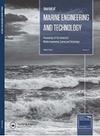IF 4.4
4区 工程技术
Q1 Engineering
引用次数: 0
摘要
减少氮氧化物(NOx)排放对于环境可持续性和空气质量具有重要意义。本研究综述了旨在减少氮氧化物排放的各种应用。以下是技术评估的摘要,包括共轨系统、废气再循环(EGR)、米勒循环、直接注水、乳化燃料和选择性催化还原(SCR)。共轨系统、EGR和Miller循环通常可以被认为是基于燃烧控制的方法,以减少气缸内的氮氧化物。直接注水和乳化燃料的目的是利用水蒸发的高内部热量来降低缸内温度。选择性催化还原是一种利用催化剂将废气中的氮氧化物转化为氮气和水蒸气的技术。本研究评估了用于减少氮氧化物排放的各种技术的有效性和适用性。每种方法可能有不同的优点和缺点。此外,根据这些方法的应用领域,可能存在某些限制和变化。因此,有必要进行仔细的评估,以确定减少氮氧化物排放的最合适的技术或技术组合。本文章由计算机程序翻译,如有差异,请以英文原文为准。
Gemi Dizel Motorunda Azot Oksitleri (NOx) İndirgeme Yöntemlerinin İncelenmesi
Reducing nitrogen oxide (NOx) emissions is of great importance in terms of environmental sustainability and air quality. This study is a review that examines various applications aimed at reducing NOx emissions. Below is a summary of the evaluation of technologies, including the common rail system, exhaust gas recirculation (EGR), Miller cycle, direct water injection, emulsified fuel, and selective catalytic reduction (SCR). The common rail system, EGR, and Miller cycle can generally be considered as combustion control-based methods for reducing NOx within the cylinder. Direct water injection and emulsified fuel aim to lower temperatures inside the cylinder by utilizing the high internal heat of evaporation of water. Selective catalytic reduction is a technology where NOx in the exhaust gas is converted into nitrogen gas and water vapor through the use of a catalyst. This study evaluates the effectiveness and applicability of various technologies used to reduce NOx emissions. Each method may have different advantages and disadvantages. Additionally, there may be certain limitations and variations depending on the application areas of these methods. Therefore, a careful assessment is necessary to determine the most suitable technology or combination of technologies for reducing NOx emissions.
求助全文
通过发布文献求助,成功后即可免费获取论文全文。
去求助
来源期刊

Journal of Marine Engineering and Technology
工程技术-工程:海洋
CiteScore
5.20
自引率
0.00%
发文量
0
审稿时长
>12 weeks
期刊介绍:
The Journal of Marine Engineering and Technology will publish papers concerned with scientific and theoretical research applied to all aspects of marine engineering and technology in addition to issues associated with the application of technology in the marine environment. The areas of interest will include:
• Fuel technology and Combustion
• Power and Propulsion Systems
• Noise and vibration
• Offshore and Underwater Technology
• Computing, IT and communication
• Pumping and Pipeline Engineering
• Safety and Environmental Assessment
• Electrical and Electronic Systems and Machines
• Vessel Manoeuvring and Stabilisation
• Tribology and Power Transmission
• Dynamic modelling, System Simulation and Control
• Heat Transfer, Energy Conversion and Use
• Renewable Energy and Sustainability
• Materials and Corrosion
• Heat Engine Development
• Green Shipping
• Hydrography
• Subsea Operations
• Cargo Handling and Containment
• Pollution Reduction
• Navigation
• Vessel Management
• Decommissioning
• Salvage Procedures
• Legislation
• Ship and floating structure design
• Robotics Salvage Procedures
• Structural Integrity Cargo Handling and Containment
• Marine resource and acquisition
• Risk Analysis Robotics
• Maintenance and Inspection Planning Vessel Management
• Marine security
• Risk Analysis
• Legislation
• Underwater Vehicles
• Plant and Equipment
• Structural Integrity
• Installation and Repair
• Plant and Equipment
• Maintenance and Inspection Planning.
 求助内容:
求助内容: 应助结果提醒方式:
应助结果提醒方式:


